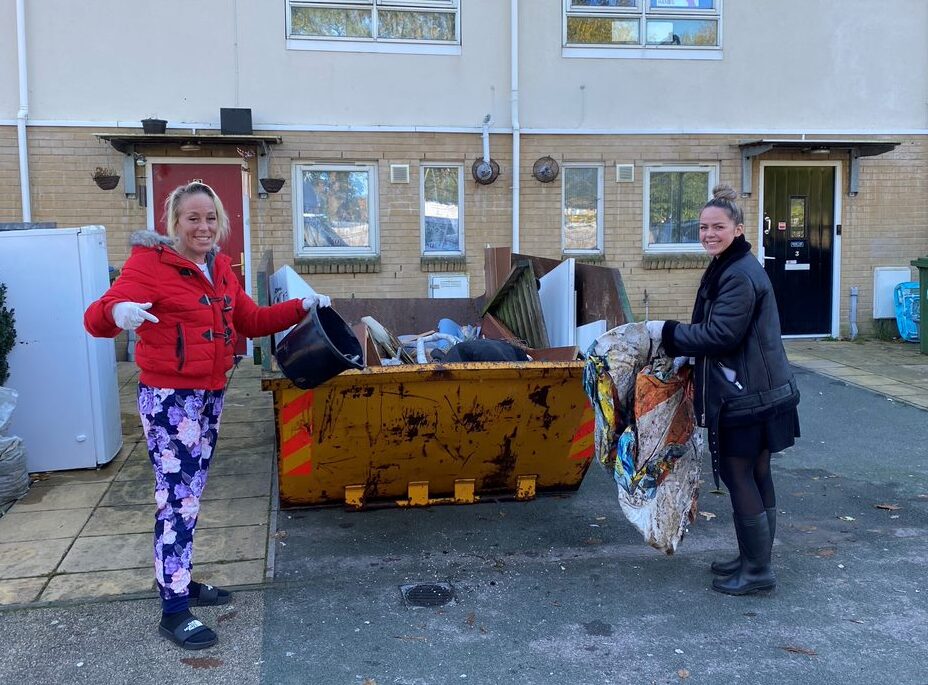The new age of regulation has arrived. There’s a lot for social landlords to think about. There’s a lot for the Regulator of Social Housing to do. Everybody’s going to be very busy. HQM caught up with the RSH’s Chief of Regulatory Engagement, Kate Dodsworth, to find out what we can expect to see.
Does the RSH feel fully prepared for the new era of consumer regulation and is everything where it needs to be currently?
Yes, we do. For us as the regulator, and in the sector more widely, people have been preparing for years – since the green paper, white paper, bill and now act. I don’t think anyone in the sector can claim they haven’t heard about the changes that are kicking in from 1 April.
We’ve certainly been out on the platforms and in the press over the last two years – talking to landlords, talking to well over 3,000 tenants. So, there should be no surprises.
At the RSH, we’ve recruited well and implemented training across the organisation. We’ve built out our teams so that they’re ready, both for our new remit in consumer regulation and, with private registered providers, continuing our remit on the economic side.
Would you say you’ve had to evolve and refine your approach as you’ve gone along, or have you always had a bit of a route map in terms of knowing what you’re doing?
We’ve followed a clear route map. Something we wanted to avoid right from the start was having a disconnect between our consumer and economic regulation. So, for housing associations, we’ve built out a model where our economic inspections dovetail with the consumer inspections. We’re regulating local authorities against the consumer standards only, so our model for them is tailored accordingly.
There are a number of new elements for us and for the sector. But we’ve always been really clear that the best way to deliver our wider role – the most efficient, the most effective, which doesn’t divert resources away from tenants – is to build out from our economic regulation.
Can you talk specifically about your role over the next 12 months. How hands-on are you going to be?
We’ve made some structural changes to deliver our integrated regulation. We have two directors, one who’s primarily going to be looking at the private registered provider side and one who’s going to be primarily looking at local authorities. We’re making sure that we’ve got the systems and processes in place to ensure collaboration, calibration and read-across these two areas.
The inspections themselves will start from 1 April and I’ll be looking at the outcomes with interest.
I’ll also continue to engage with tenants. This has been very important in helping to shape our new approach. The support and approval for our consumer standards, for instance, from tenants, range from 88% to 95% across the four standards. And for me, it’s really important to carry on those conversations, meeting with tenants and umbrella bodies, and making sure that this helpful input is still happening.
“There may be occasions where we look at the evidence, we engage with the provider, and something is so serious that we need to go out and inspect”
Has the inspection regime now been finalised? Are you able to walk us through it?
 We set out clear information in the package of information that we published on 29 February. And we’ve given a clear direction of travel to the sector for some time.
We set out clear information in the package of information that we published on 29 February. And we’ve given a clear direction of travel to the sector for some time.
The inspection process is, as usual, in the region of six weeks’ notice.
We’ll use existing data and request information from landlords to build an evidence base. Throughout the process, we’re seeking evidence of landlords’ assurance that they’re delivering the outcomes in our standards.
And then the field work will start. Typically our teams will go in, ask further questions, talk to the board, or to lead members on the local authority side, the executive team, and observe a tenant scrutiny committee.
In some cases, we may need to go further and carry out, for example, a focus group or a survey on a specific issue with tenants.
Then, as housing associations are used to, we’ll form our independent judgment. That’s a C1 to C4 grading for consumer regulation. For housing associations, they will go alongside our gradings for governance and financial viability.
Our judgements will talk about overall delivery against the standards. Where there are problems, we’ll be working intensely with those landlords on an improvement programme.
Is there the likelihood of spot or short notice inspections as well?
It’s important that people, including tenants, can make referrals to us at any time.
There may be occasions where we look at the evidence, we engage with the provider, and something is so serious that we need to go out and inspect. It’s not a spot inspection, but it’s an inspection that will be triggered by something serious happening in between the cycle of programmed inspections.
And given that the inspection regime starts on 1 April, do you know who the first landlords are that you’re going to be inspecting? And I suppose, more importantly, do they know?
We’re starting to inform the relevant landlords.
Are you able to confirm what’s happening with the new C ratings. How significant are they? Does a poor C rating impact on the governance rating, for example?
People often ask me where I think the sector is at the moment in relation to grades.
Many will have heard me say that I don’t think large swathes are going to be in C1 territory. But the proof will be in actually going out and inspecting. We’ll be looking closely at the inspection outcomes and the themes that emerge. And we’ll carry out trend analysis as we move into the four-year programme.
We’ve a really clear vision in our standards: that tenants live in safe and good-quality homes, enjoy good landlord services and are treated with fairness and respect.
If a landlord fails to deliver these outcomes, then it’s serious.
In terms of the relationship with the governance ratings for housing associations, we’ll see how that matrix evolves over the four years. But I think it’s highly unlikely that a landlord would have a G1 grading with a real fundamental failing in C4 territory.
Just breaking down the different C ratings from C1 to C4, can you quickly just tell us what each of those looks like and where you expect most landlords to fall initially?
A C1 grade is going to be delivering against the standards overall. With a C2 grade, there will be some weaknesses that need to be addressed. At C3, you’re starting to see some serious failings. And C4, you’re seeing some fundamentally serious failings. And that could be across a whole range of areas, but could include issues like health and safety compliance.
I don’t think there are going to be large swathes of the sector in C1 territory, because of what we’ve seen in our casework and what tenants have been telling us. But we’ll know more after we start our inspection programme.
“We want to see improvement for tenants. For the sector as a whole – local authorities and housing associations – I do think it’s going to take some time”
Do you feel landlords are ready for the new regulatory era? There’s obviously been some concern over the preparedness of councils. But what’s your general take on where the sector is in its preparations?
 We’ve been saying, ‘get ready now’ for some years. Good landlords will have been surfacing problems so that they can deal with them. They’ll have been carrying out some sort of gap analysis against the draft standards and the tenant satisfaction measures, and looking back to the themes of the white paper.
We’ve been saying, ‘get ready now’ for some years. Good landlords will have been surfacing problems so that they can deal with them. They’ll have been carrying out some sort of gap analysis against the draft standards and the tenant satisfaction measures, and looking back to the themes of the white paper.
We want to see improvement for tenants. For the sector as a whole – local authorities and housing associations – I do think it’s going to take some time.
A lot of this is around data, systems and culture. And I think the very act of us going out and proactively inspecting and kicking the tyres on these things mean that boards and lead members will need to have strong oversight. That in itself is a really effective culture shift, but it may well take some time.
Is there a concern that landlords will do the bare minimum to meet the new standards rather than strive for excellence?
Going back to our vision again, we expect to see tenants living in safe homes, with universally good-quality landlord services, and a relationship underpinned by trust, respect and transparency.
This is similar to landlords’ core mission. And I think that must be at the heart of what landlords are striving to do. It’s not just about passing a regulatory test and I’m sure landlords will want to do much more.
What is your message to landlords as the new era gets underway?
It’s important to emphasise the importance of our economic regulation. We know there are challenges and trade-offs, but governance and financial viability continue to be incredibly important.
With consumer regulation, often it comes back to culture: can a landlord easily spot issues and put them right? What’s the golden thread running through the organisation to understand quickly the themes of complaints? How able are they to spot problems with the quality of tenants’ homes? And how robust and effective is their data?
I would call on boards and lead members to continue asking these questions.
Are you able to quickly walk us through the timeline for the next six to 12 months, so people have a clear understanding of what’s coming?
We’re really looking forward to getting out and delivering our new role. From April some landlords will start to have their inspections, and although change isn’t going to happen overnight, this is an important shift for the sector that will help drive improvements for tenants.
And internally, for us at the regulator, we’ll continue to recruit where necessary and train our teams.
Finally, can you tell us a bit more about how you plan to use your new powers, such as performance improvement plans and the use of fines for non-compliant landlords?
We’ll continue to push landlords to put things right when they fail to meet the outcomes in our standards. If they can’t or won’t, there are a range of new and stronger powers that we can use. One option could be a performance improvement plan, to set out what the landlord needs to do to put things right and to tell their tenants about that.
Fines are another one of our tools, which could be helpful, but we’ll think carefully before issuing them as ultimately they will be paid from tenants’ rents.





















